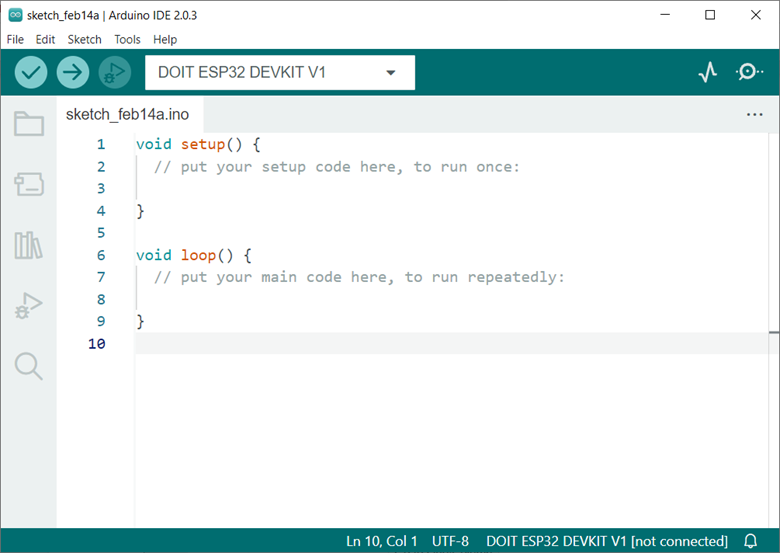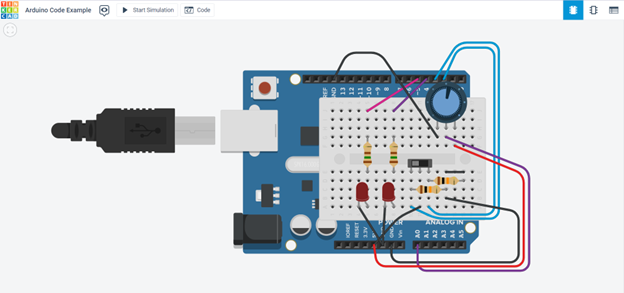When it comes to designing and testing microcontroller circuits, you have a choice between using Arduino IDE or TinkerCAD Simulator. Both these platforms offer separate value to Arduino enthusiasts. The IDE is core related to code writing and debugging while TinkerCAD applications include real time simulation of hardware.
In this article, we’ll take a closer look at the key differences between Arduino IDE and TinkerCAD Simulator and help you determine which one is best for your needs.
What is Arduino IDE
Arduino Integrated Development Environment (IDE) is a free, open-source platform that’s designed to help you build and test microcontroller circuits. Arduino IDE is core related to programming and testing hardware. Arduino IDE provides an environment for coding, debugging, and uploading sketches to microcontrollers boards.
With Arduino IDE, you have access to a library of functions that make it easy to interact with sensors and other hardware components. The Arduino IDE supports the C/C++ programming language which is widely used in embedded system applications and microcontroller boards such as ESP32.
To download the latest Arduino IDE visit arduino.cc.
What is TinkerCAD Simulator
TinkerCAD is a cloud-based 3D design platform that provides you with a virtual environment to design and test your circuits. Unlike Arduino IDE, TinkerCAD doesn’t require you to install any software on your computer. Instead, you can access it from any web browser and start designing circuits right away.
TinkerCAD Simulator provides you with a range of components to build your circuits, including resistors, capacitors, LEDs, and more. You can also use its built-in simulation engine to test and debug your designs without the need for physical components.
To start designing and simulating Arduino circuits open tinkercad.com.
Features of Arduino IDE
Arduino IDE features include the following:
- User-friendly interface for programming and testing microcontroller-based devices.
- Supports multiple programming languages such as C, C++, and Python.
- Comes with a built-in library of functions for controlling various components and devices.
- Supports third-party libraries and add-ons for extending its functionalities.
- Using Arduino cloud, we can share projects with the people and Arduino community.
Features of TinkerCAD Simulator
TinkerCAD simulator has following main highlights:
- Drag-and-drop interface for creating and simulating electronic circuits.
- Comes with a wide range of components such as resistors, capacitors, and diodes.
- Allows users to simulate the behavior of their circuits using virtual instruments like oscilloscopes and multimeters.
- Supports third-party plugins for extending its functionalities.
- Allows users to collaborate and share their projects with others.
Key Differences between Arduino IDE and TinkerCAD Simulator
Arduino IDE and TinkerCAD are both aimed at beginners, there are some key differences that one must know while designing an Arduino project:
User-Friendliness: When it comes to ease of use the TinkerCAD Simulator takes the lead as it has a more user-friendly interface that’s ideal for beginners, while Arduino IDE requires a little bit more technical knowledge.
Winner: TinkerCAD
Cost: Arduino IDE is a free tool available for all boards and devices while TinkerCAD Simulator requires a subscription to access its full features. However, TinkerCAD Simulator has a bunch of free tools available for beginners.
Winner: Arduino IDE
Circuit Components: Arduino IDE provides you with a limited selection of components to build your circuits, while TinkerCAD Simulator not only has support for multiple boards, but it also offers a wide range of components, including microcontrollers, sensors, and other hardware components.
Winner: TinkerCAD
Programming Language: Arduino IDE uses C/C++ programming language, while TinkerCAD Simulator uses a visual programming language that’s based on blocks. If one wants to have a strong grip on Arduino programming, then IDE is best for it.
Winner: Arduino IDE
Simulation: TinkerCAD Simulator provides a built-in simulation engine to test and debug your designs, while Arduino IDE requires you to physically connect components to test your designs. Physical hardware means more cost and time for designing a project.
Winner: TinkerCAD
Conclusion
Both Arduino IDE and TinkerCAD Simulator have their own strengths and weaknesses. Ultimately, the choice between Arduino IDE and TinkerCAD Simulator will come down to your personal needs and preferences. If you’re looking for a powerful environment for coding and debugging, then Arduino IDE might be the better choice for you. However, if you’re a beginner or student who wants a user-friendly environment for designing circuits, then TinkerCAD Simulator might be the better option.


